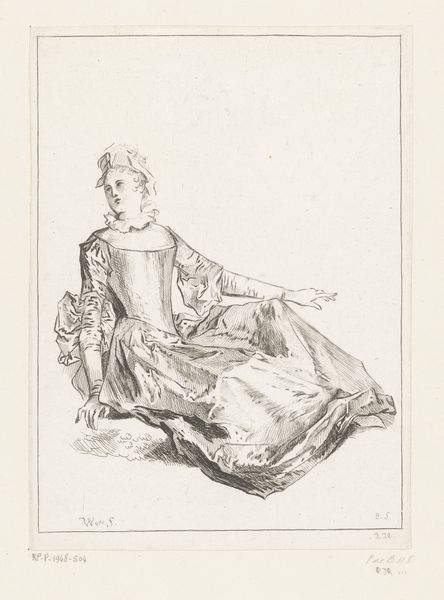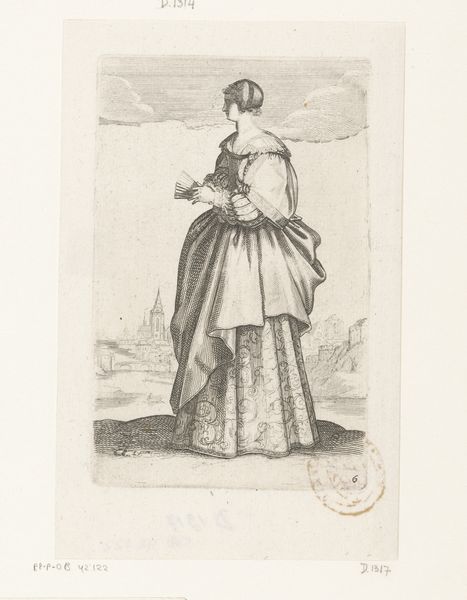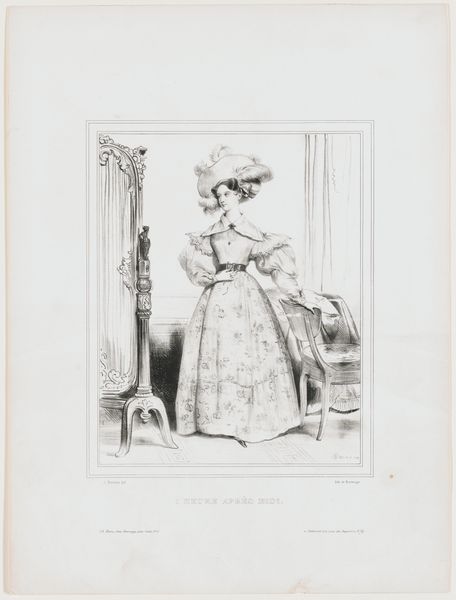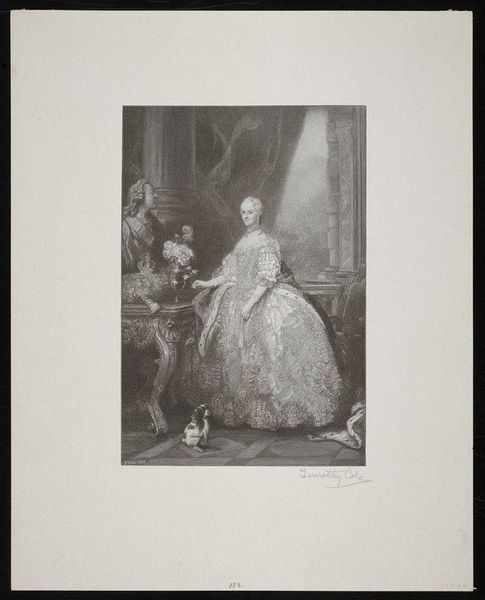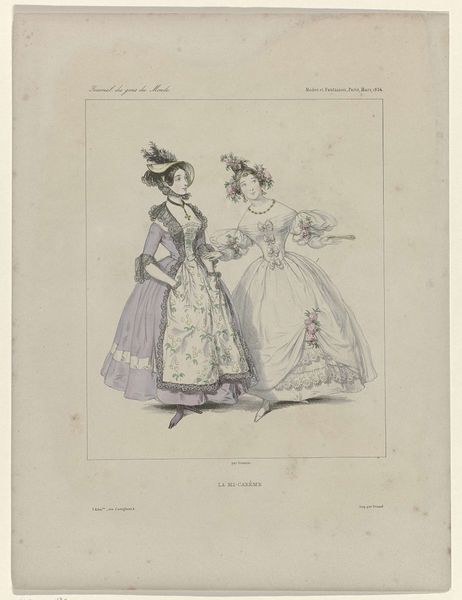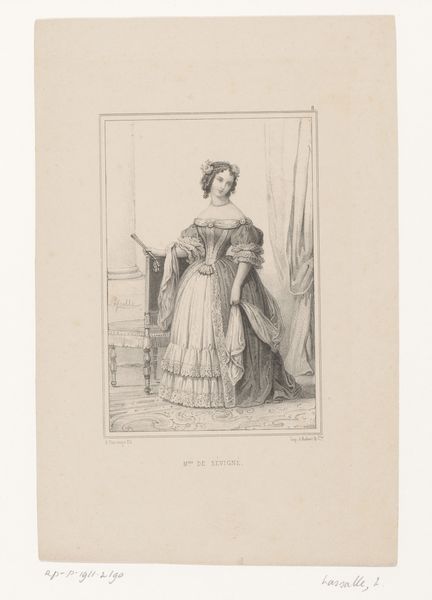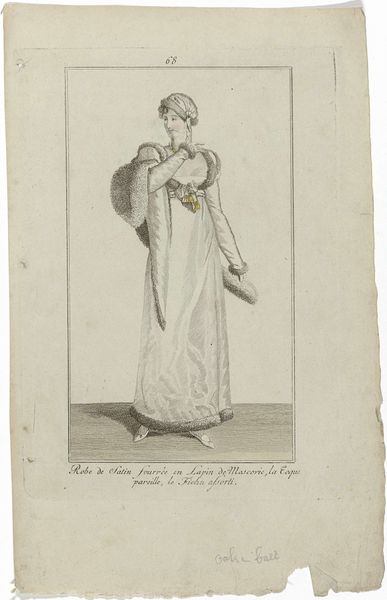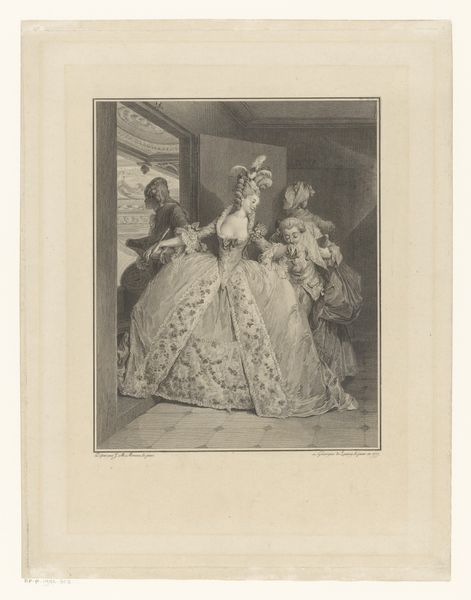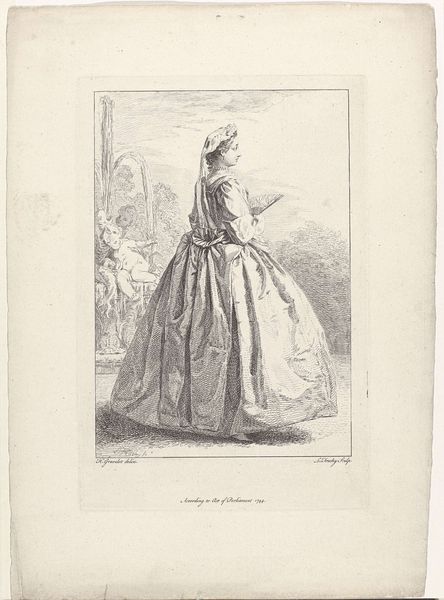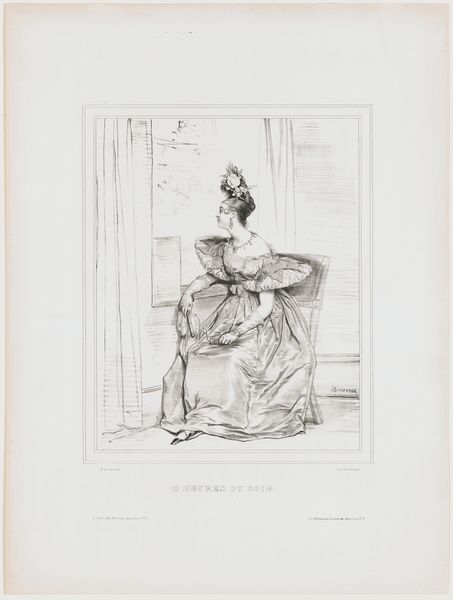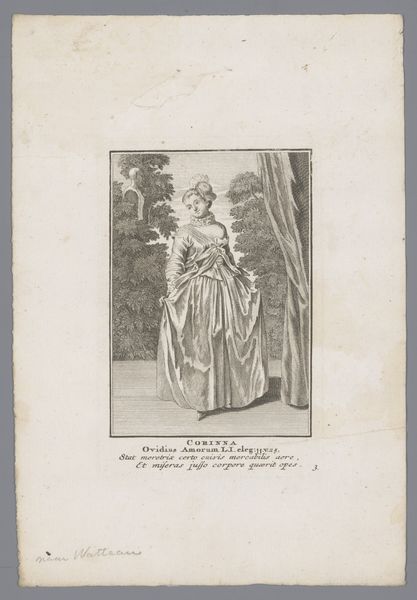
print, engraving
#
portrait
#
neoclacissism
# print
#
old engraving style
#
figuration
#
line
#
history-painting
#
engraving
Dimensions: height 385 mm, width 280 mm
Copyright: Rijks Museum: Open Domain
Curator: We are looking at “Portret van Josephine,” an engraving executed by Jean Louis Charles Pauquet between 1804 and 1824, rendered in a neoclassical style. Editor: The delicate linework evokes such a poised stillness; her gaze directs attention with quiet command. The details in the dress contrast beautifully with the smoothness of her face. Curator: Indeed, Pauquet uses the stark linearity of engraving to create this contrast; the intricate patterns of her gown against the classical simplicity of her face reflect a moment of transition in portraiture. The Neoclassical aesthetic sought to strip away excess in favor of "purity" of form, influenced heavily by classical antiquity. Editor: It is striking how the very medium—engraving—adds to the feeling of classical composure and status. I cannot help but be fascinated by Josephine's gown. The elaborate embroidery, that cascades from her shoulders into this extended train. Its pattern evokes a regal floral lexicon. How does this speak to the iconography surrounding her at the time? Curator: Certainly, the visual elements convey aspects of empire, albeit through relatively toned-down iconography. While opulent, her dress lacks excessive ornamentation; rather, its Neoclassical simplicity subtly signals imperial status while still conveying a sense of Republican virtue. Look at the overall tonality and balance—it’s an artful restraint that speaks volumes about Josephine’s carefully crafted image. Editor: I agree, the relatively sparse composition adds to that idea of ‘restraint’ you mentioned. Yet those fine details in her dress; do you think they hint at anxieties of aristocracy at the time or a wish to signal her significance without fully submitting to royal symbolism? It projects such controlled ambition. Curator: Interesting interpretation. Certainly the nuances can be read as subtle signifiers of ambition balanced by a careful attention to prevailing cultural values and sensibilities. The overall design reflects both elegance and political astuteness in visual form. Editor: A balanced reading for a balanced composition then. I am left pondering the relationship between form and the projected ideals of Josephine, here. Curator: A print allows for dissemination of status, power, and likeness at scale, achieving maximum strategic, political and reputational benefit for its subject. Food for thought indeed.
Comments
No comments
Be the first to comment and join the conversation on the ultimate creative platform.
